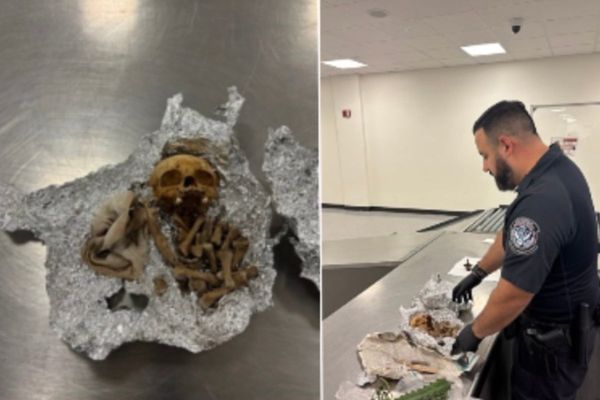
In the aftermath of the devastating floods that ripped through the northern New South Wales town of Lismore in 2022, being creative felt like “an unnecessary luxury”, says the ceramics artist Luke Atkinson.
Atkinson lost his studio in the floods: all his work, his pottery wheel and 30 years of drawings were swept away in the four-metre-high water. But his house remained, so he counted himself lucky.
“The collective trauma was pretty huge,” he says. “We had our classrooms destroyed, our equipment and our tools.
“It took a huge personal toll … Being creative seemed irrelevant when there was so much tragedy around.”

Atkinson had moved to Lismore from Sydney in 2018 and swapped a career in graphic design for a diploma in ceramics at the local Tafe. After the floods, the momentum he had gained as a ceramicist faded.
But as the town started to recover, he was given a chance to begin again. The Lismore Regional Gallery selected three local artists for a 10-day residency supported by the Cowra-based regional arts organisation the CORRIDOR project, and Atkinson was on the list.
“It was a massive boost to all three of us – to our confidence – to be recognised by the gallery as people worthy of this residency,” Atkinson says.
“Personally it gave me permission to start creating again.”
The residency took place in February, with artists living and working in converted shearers quarters at the CORRIDOR project at Wyangala. They also met with the directors of regional galleries in Orange, Bathurst and Cowra, and visited local studios.
Atkinson says he now feels encouraged to seek out more opportunities, including entering sculpture prizes and applying to take part in open studio trails and exhibitions.
Most importantly, he says, the residency gave him the confidence to call himself an artist.
Barriers to entry
Many regional galleries and arts organisations have restarted their artistic residency programs after pausing during the pandemic.
But the director of Orange Regional Gallery, Brad Hammond, says that artists still face financial barriers in being able to take part.
“If the place offering the residency doesn’t have the funding … it has to come from the artists, so essentially they’re paying for time, and that puts a kind of pressure on them,” he says.
Hammond hopes that by partnering with artist-in-residence programs, galleries can offer exhibition space and industry networking opportunities to new artists. But he says that such involvement is dependent on continued funding from local governments and state government agencies.
Even when funding is available, residencies can be exclusionary simply because they require artists to take time away.
“The main barrier would be that even if you are successful … people often have to step out of their life,” Hammond says.
Cara Johnson, an artist from the Otway Ranges in south-west Victoria, is familiar with these challenges. She often needs to travel long distances to develop her career.
This year, on her fourth try, she was accepted into Melbourne’s Australian Tapestry Workshop, which offers six places a year and is open to artists and craftspeople of any discipline and career level, including those from overseas.

But the residency, which offers a dedicated studio space and materials, as well as the opportunity to connect with other artists in the city, requires a two-and-a-half-hour commute. She has applied for a stipend from the Australia Council for the Arts to support her staying in Melbourne part-time during the six-week period.
It’s the second time she has had to travel for a residency: in 2018 she drove to the southern highlands in NSW to complete two on-site stays for a residency at the Sturt Craft Centre, supported by a small stipend.
“I didn’t have a clear goal [from the residency],” she says. “It was the exposure I had to other artists from various disciplines, and time to reflect on what I wanted to do that was the most valuable.”
Now what she wants is more time to reflect.
In March, Johnson completed the installation of her first permanent public sculpture in Bonnie Doon on the Great Victorian Rail Trail. She has two residencies lined up later this year, and in November she is showing her work in a solo exhibition at Ararat Gallery TAMA (Textile Art Museum Australia). She is also a PhD candidate at the School of Art at RMIT University in Melbourne.
“I’ve been consistently working hard, and now it feels like things have been going really well for me … it’s happened to be timed with having a baby,” Johnson says.
“I’ve never been more busy or tired in my life.”
Hammond says this kind of respite is essential for artists.
“One of the really import things in creative practice is the time and the space to make bad work and to make mistakes … to basically sift out and edit one’s own work in a space where you have the freedom to explore things,” he says.
“If you have the right time and solitude to do that, you end up with really interesting work. You can’t really put a price on that, but any money towards it is great.”







